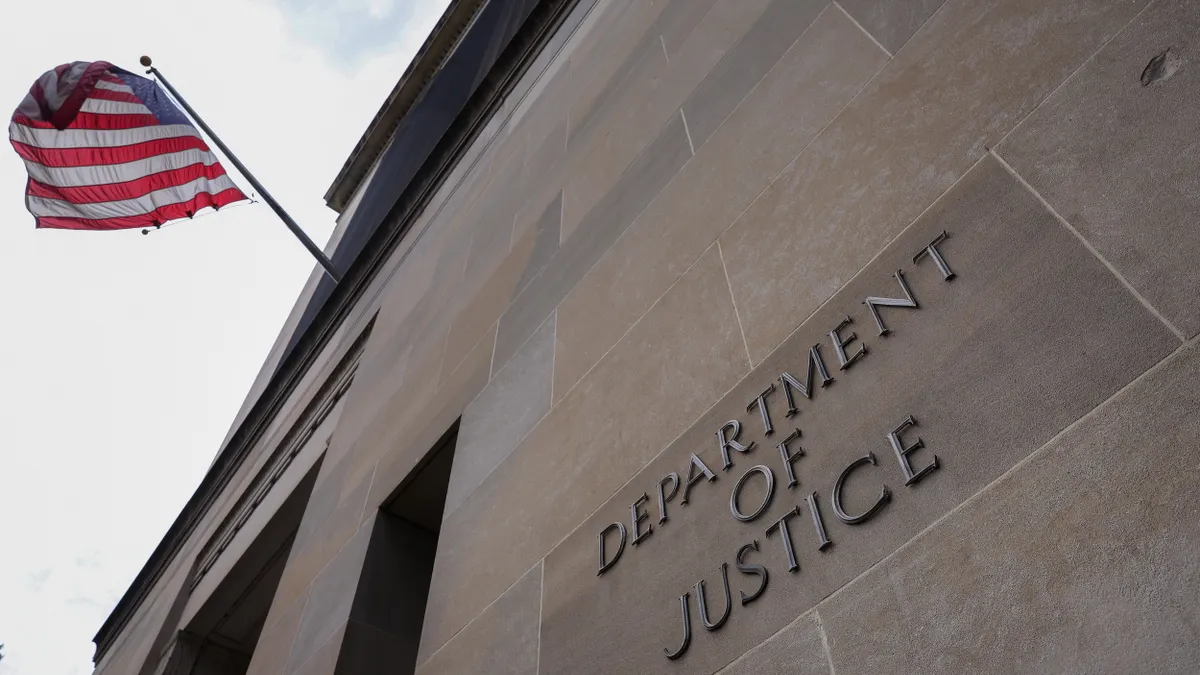The U.S. Department of Education’s October release of its toolkit to help schools implement artificial intelligence came at the right time, said Pete Just, project director for the AI Thought Initiative at the Consortium for School Networking.
Some six months ago, a lot of schools were still deciding what direction to take with AI in regard to their curriculum and operations, he said.
“I think over the course of the summer and the beginning of the school year, there have been a lot more deeper conversations,” Just said. And now, “a number of schools are starting to put policy and guidance in place.”
The Education Department’s 74-page toolkit for various levels of AI implementation breaks down guidance for schools into three sections: mitigating risk, building a strategy and guiding the effective use of AI.
All of these are important topics that schools should be discussing among leadership and with their teachers, Just said.
The biggest role this guidance plays is that it helps school districts prioritize conversations about using AI in their school communities, Just said.
Kris Hagel, chief information officer at Peninsula School District in Gig Harbor, Washington, said the Education Department’s AI toolkit will be used as a resource to ensure his district is going down the right path as it continues to implement the technology.
When Peninsula School District was developing its own AI principles and belief statement just months after the release of ChatGPT, the district tapped into a lot of highlights from the department’s first report on AI in 2023. That document weighed the risks and opportunities for using those tools in the classroom.
The same goes for Michael Rubin, principal at Uxbridge High School in Massachusetts, who said that once he takes a deeper dive into the federal AI toolkit, it will give his school a better sense of where they want current AI policies to go and impact next.
Understanding AI’s data privacy implications
For Rubin, he advises that districts that don’t know where to start first look at the opportunities and risks for using AI in schools, which the toolkit covers.
As districts dive into the department’s reminders about mitigating the risks involving data privacy, accessibility and bias, school leaders should remember to keep their local contexts in mind, Rubin said. “Data security and the bias factors have to be weighed by each individual district.”
“Individuals may take that for granted. They may take data security for granted, they may take accessibility or bias for granted, and I think the toolkit does a good job of really highlighting where some of the areas of concern are,” Rubin said.
If schools don’t consider these factors, Rubin said, they may have a predisposition to assuming these risks with AI use don’t exist.
Peninsula School District is planning to release guidance to teachers soon regarding the privacy expectations of AI tools and which features are safer than others, Hagel said.
Even so, challenges remain about the costs to secure sensitive information while using AI tools.
Hagel said it’s not financially sustainable for districts to pay for enterprise AI system agreements, which are more likely to protect a school system’s sensitive data. “We can’t afford $30 a month per user, and so you’ve got to figure out different ways to look at using AI,” he said, adding that enterprise plans are “not going to be a sustainable thing for K-12.”
Building an AI strategy
Just said he was happy to see that the department’s toolkit advises districts to align their AI strategies with their educational goals. It’s important that districts clearly understand what they want to accomplish before they try to encourage the use of AI tools with students and staff, he added.
At the same time, Just said, school leaders need to personally understand what AI is before they develop implementation plans. To get a hold on AI’s capabilities from an administrative and educational perspective, he suggests that school leaders start exploring AI and use some tools on their own first.
“Maybe that's the first place, but then shortly after that, once you understand what it offers, building that strategy is the next thing that should happen,” Just said.
Don’t rush to adopt AI tools
When it comes to implementing new AI tools districtwide, school leaders need to have a deep conversation with district administrators before adopting multiple new apps to use in classrooms and beyond, Just said. In those discussions, he said, schools should first identify what problems they’re trying to solve with AI before rolling out any tools.
“I think we need to be careful not to focus too much on applications before we better understand the bigger picture,” Just said. “I have seen a trend where schools are just adopting different types of software and hoping that that really kind of addresses all issues, and it really doesn’t.”
Rubin agreed with Just that schools need to pick a tool that works to address a specific issue and not one that aims to be a “one-size-fits-all” solution. But that doesn’t mean schools should quickly adopt 50 different tools at once either.
Overall, Rubin said schools should take their time as they implement AI while using the toolkit to do so. While Rubin doesn’t fully endorse the toolkit, he does appreciate how it can be applied to districts with varying levels of AI experience.
“Whether you feel like you’re late, on time or ahead … you’re right,” Rubin said. “It's like building an appropriate curriculum: There's always going to be something new to learn, and there's never a rough time to start. And if a toolkit can provide you that framework, then use it for all it's worth.”




















